Last week when I was in Denver to do some training, I had an unexpected free day. I had my son (21) with me, who has suddenly taken an interest in the door and hardware industry, and we went to the Denver Zoo. While we were there I realized that a zoo is one of the few types of projects that I have never written a hardware specification for. That’s kind of a shame because there are some cool applications on a zoo that you wouldn’t run into in any other type of building.
Here are a few that I noticed during our visit…
This gate serves a covered pool where visitors can pet and/or feed the rays. I’m guessing there have been problems with people thinking that they couldn’t exit through the gate, so the “instructional signage” was modified.
The giraffes had very specialized doors to accommodate their height. I’d like to know more about the one with the rails at the top and the chain across the top panel.
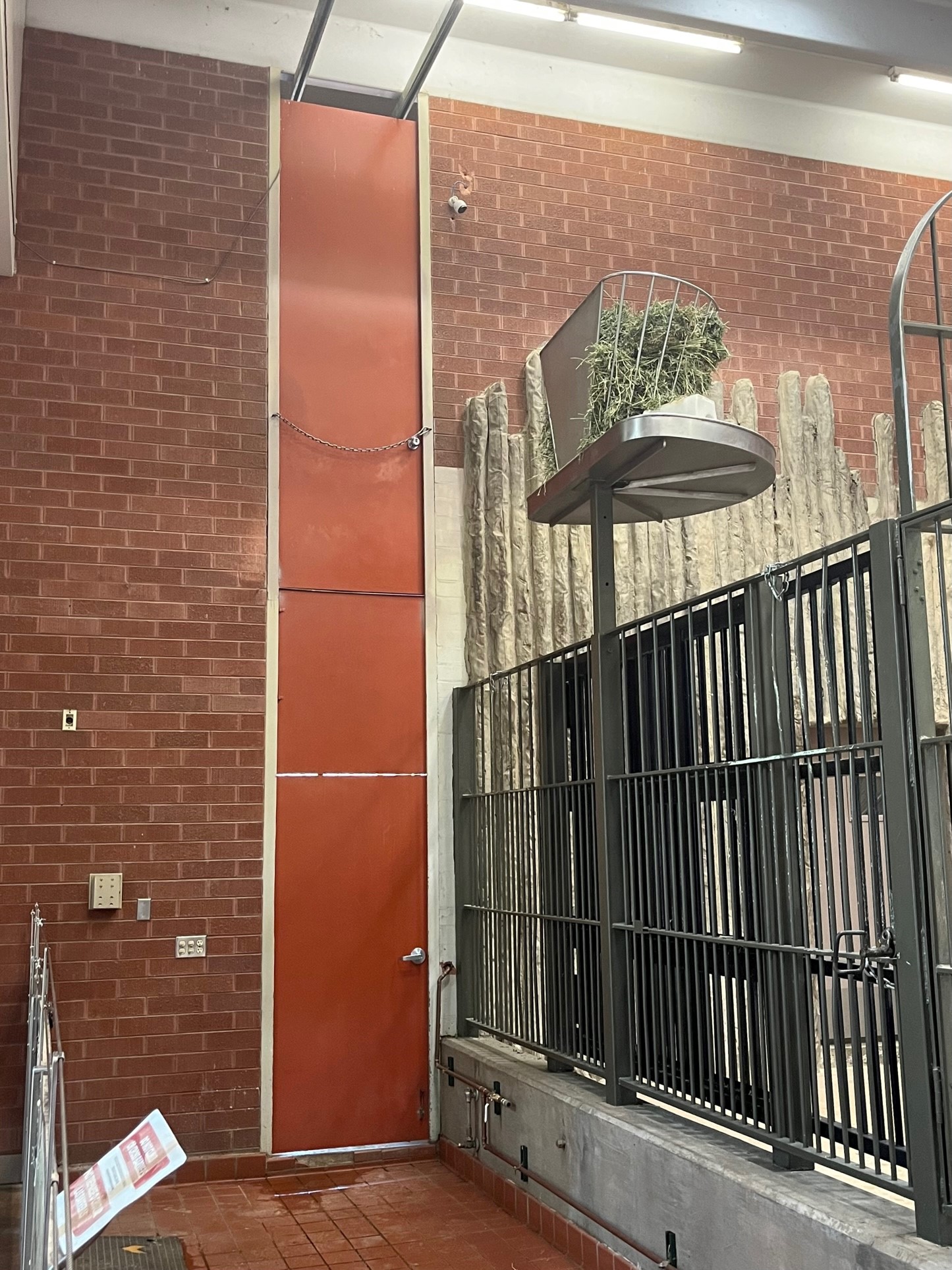
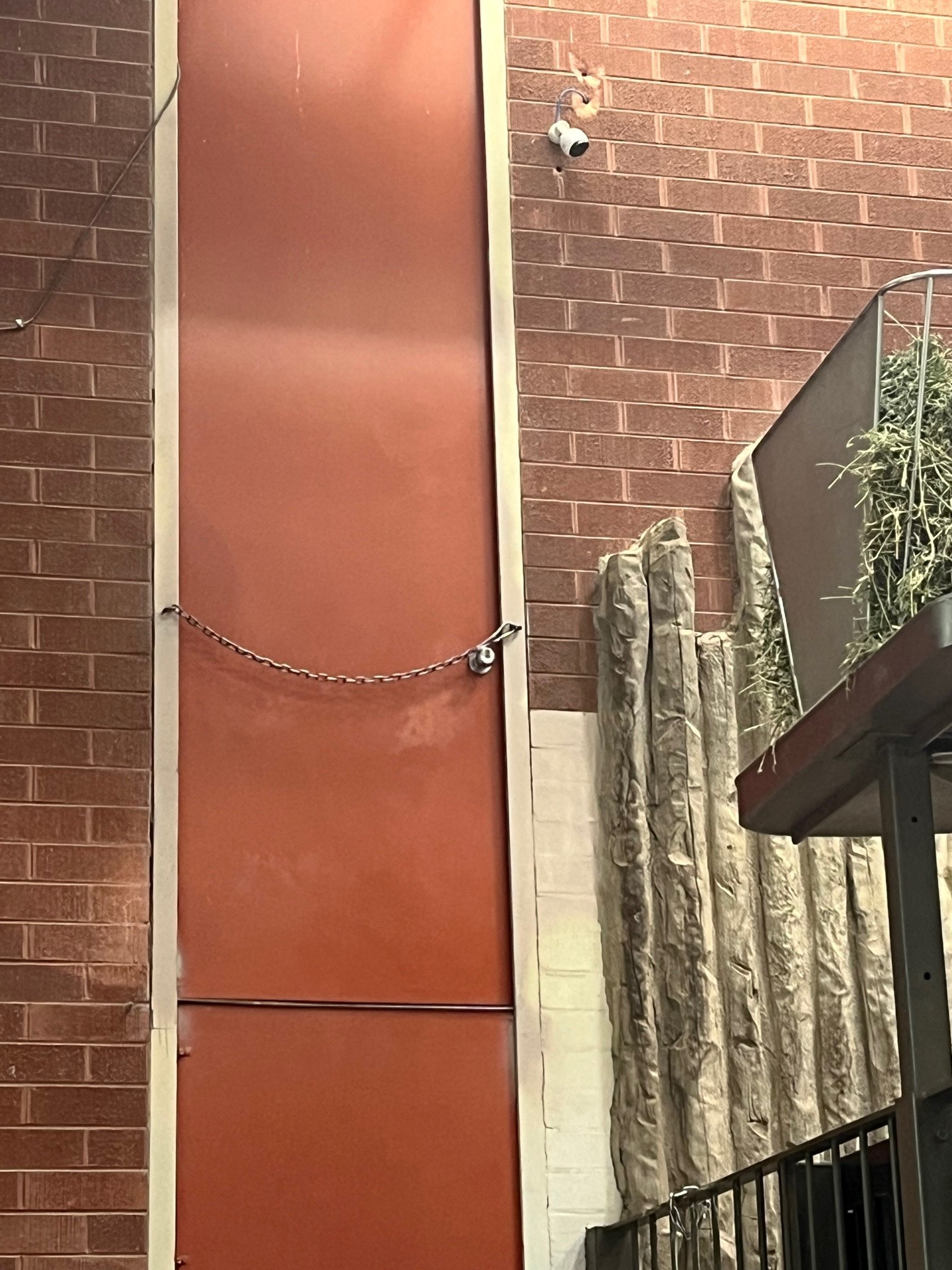
This area was constructed to look like stone, including the panel on the door. I would have painted the door a coordinating color, but with regard to codes, it’s ok to disguise the door this way because the “stone” was on the access side of the door leading to an employee area. This wouldn’t be allowed if it was the egress side of a door in the path of egress.
The next one is going to take some explaining. It’s the tiger enclosure – a space shared by two tigers who apparently don’t come into direct contact with each other. The tigers can individually access the “bridge” over the entrance to the viewing area, but only one side can be open at any given time.
In these photos you can see that the tiger door on the left is closed (look up) and the one on the right is open.
It looks like the doors are controlled electrically, but access to the control panel is limited by padlocks. In order to open the box, employees with the “blue” and “green” keys must remove those padlocks to allow access to the key cylinder on the primary padlock.
Even my son (a total rookie!) knew what was wrong with the next openings…I swear he has absorbed a lot of door-related info over the years. If you’re new here, the touchpad of the panic hardware is supposed to measure at least half the width of the door.
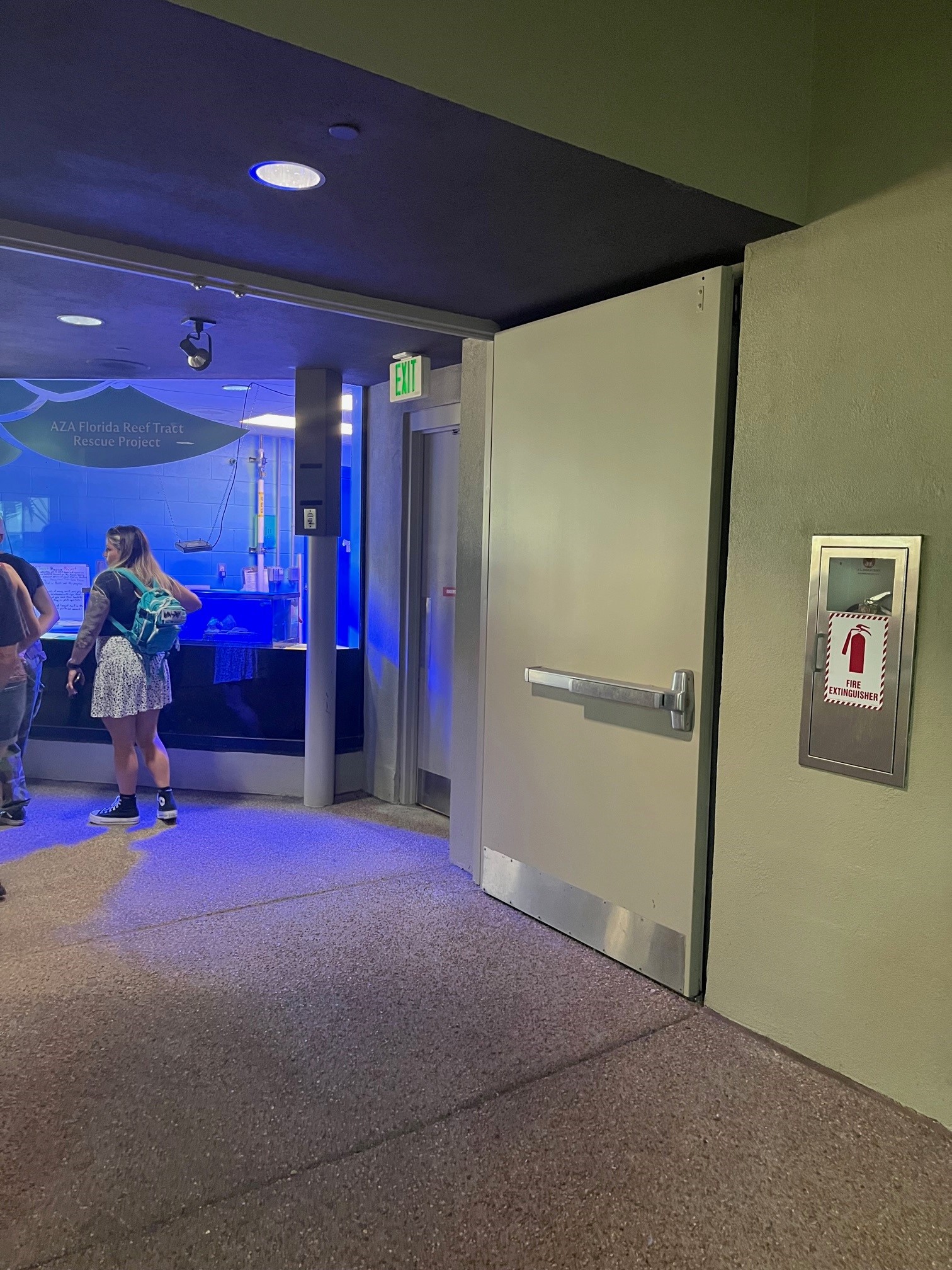
Doors serving areas housing primates have special requirements due to the strength and dexterity of the animals. I’m curious about the tubes attached to the opposite side of this door in the orangutan enclosure. Any ideas?
You need to login or register to bookmark/favorite this content.

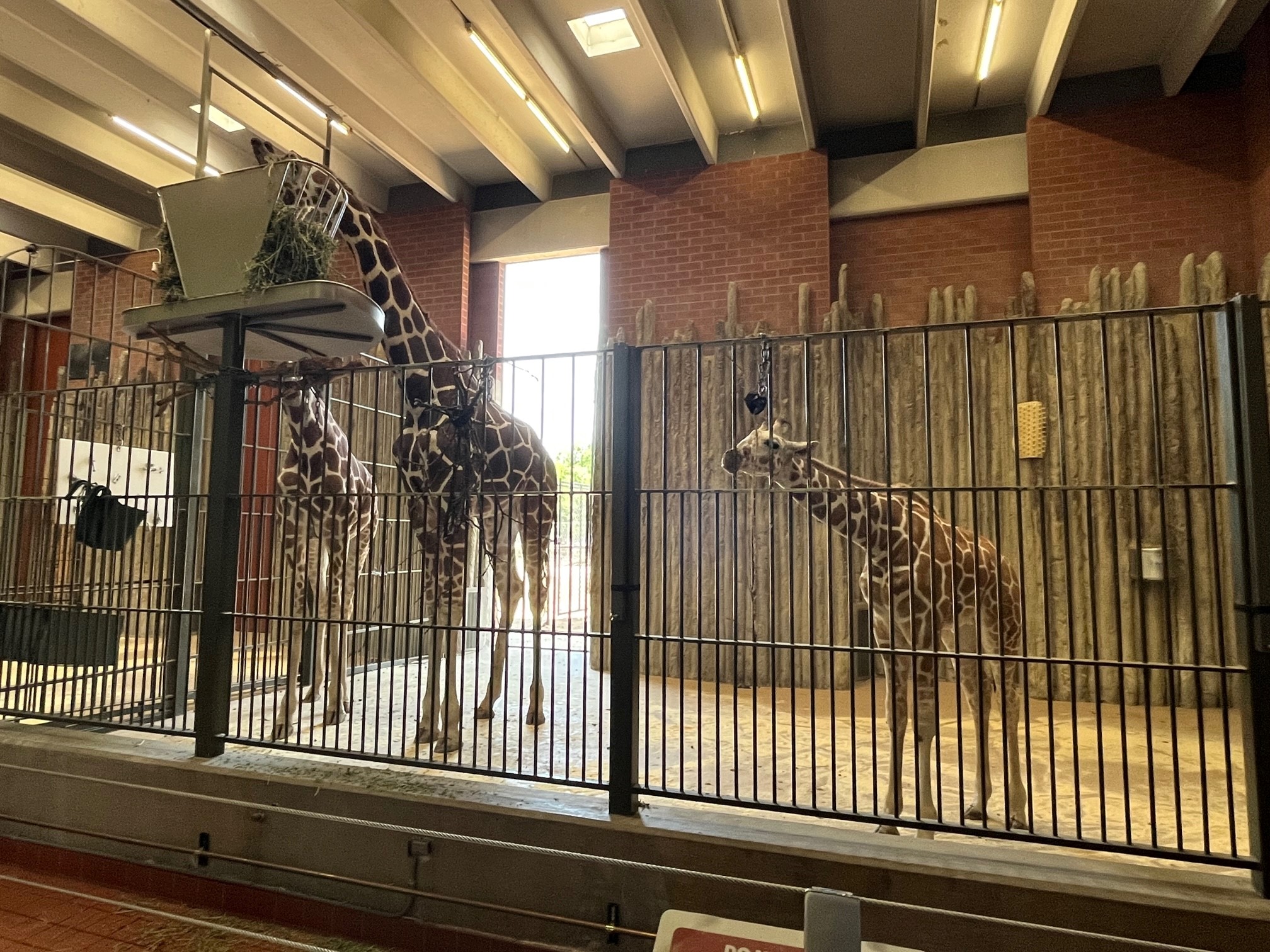
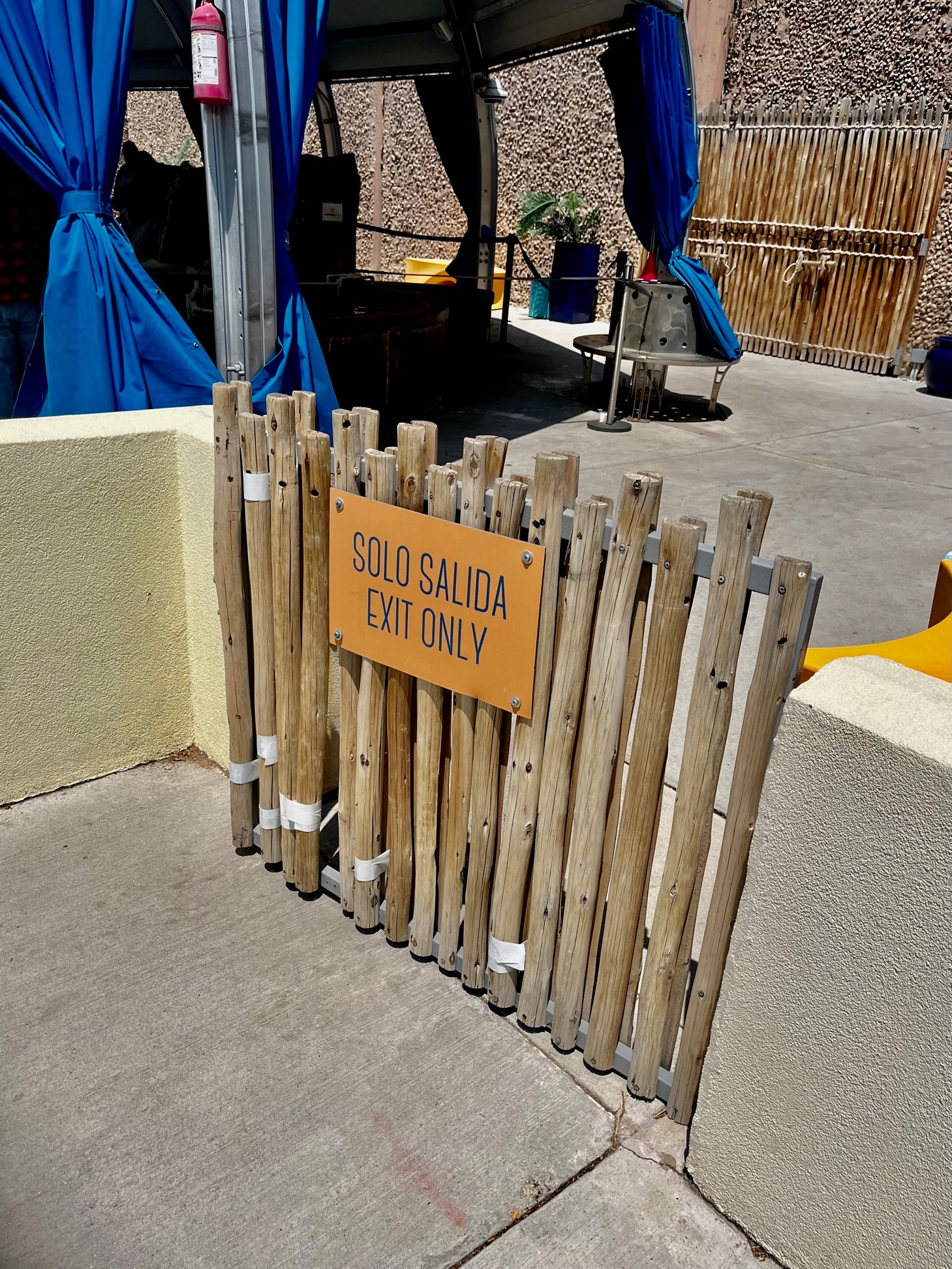
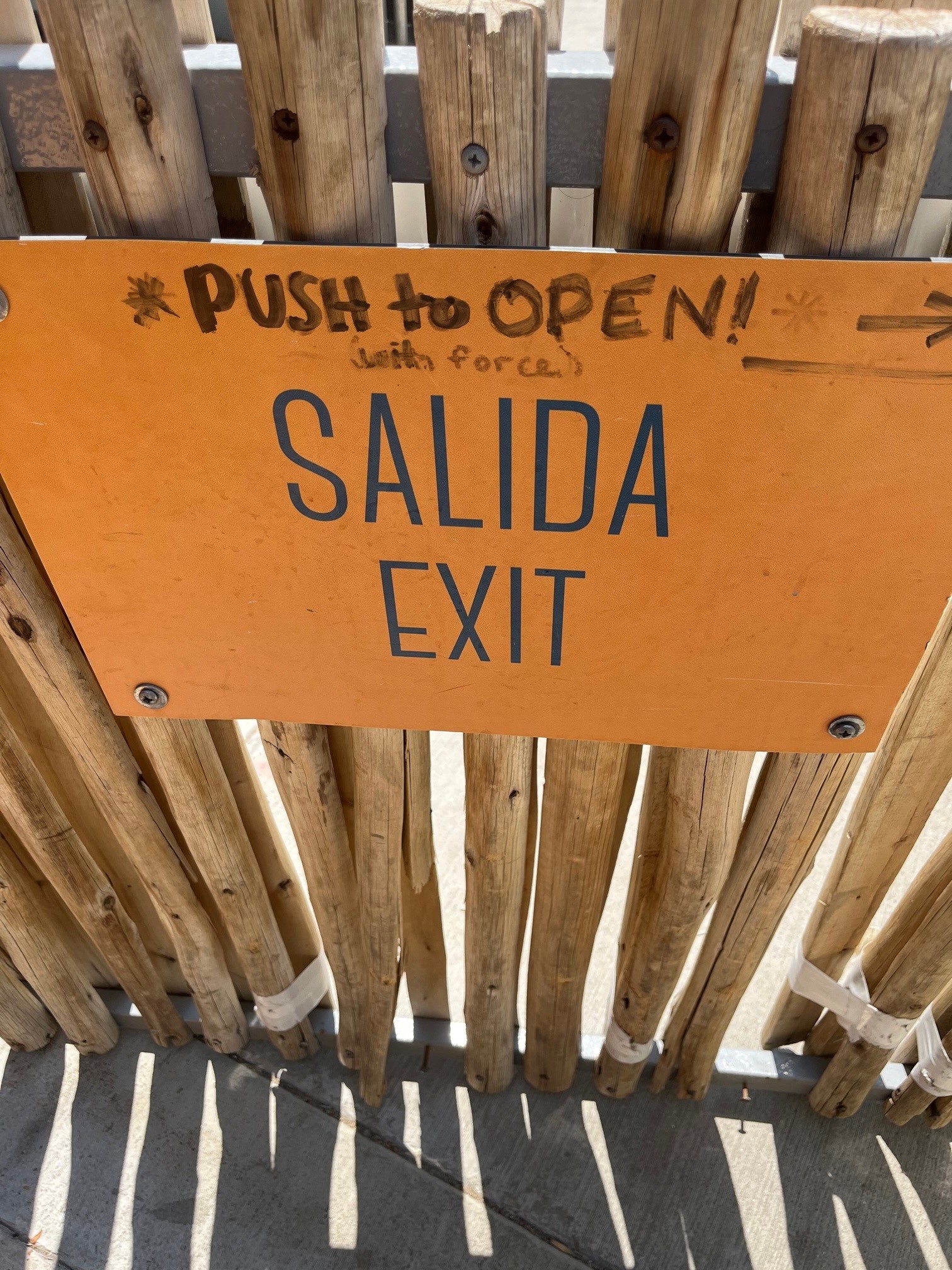
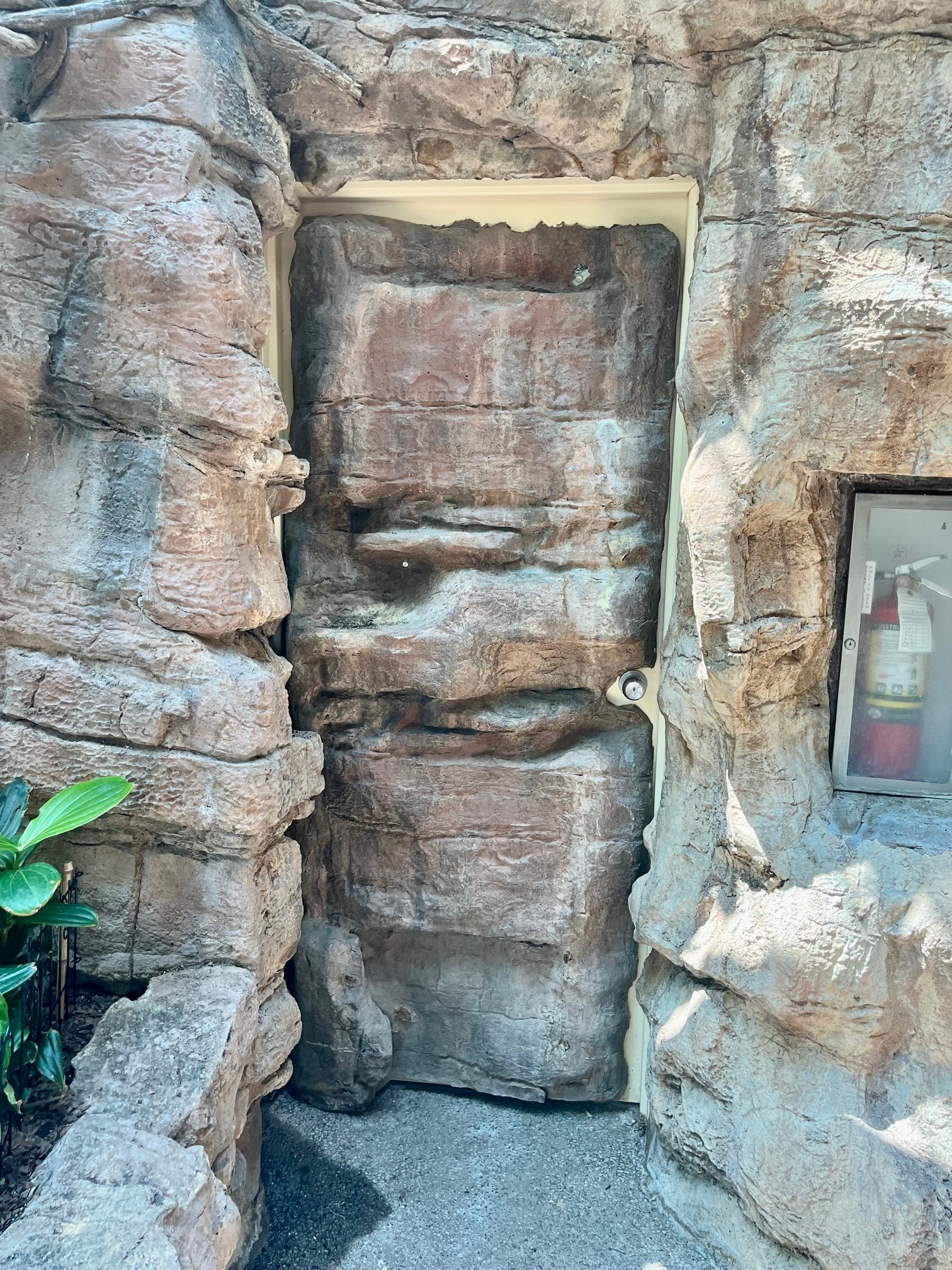
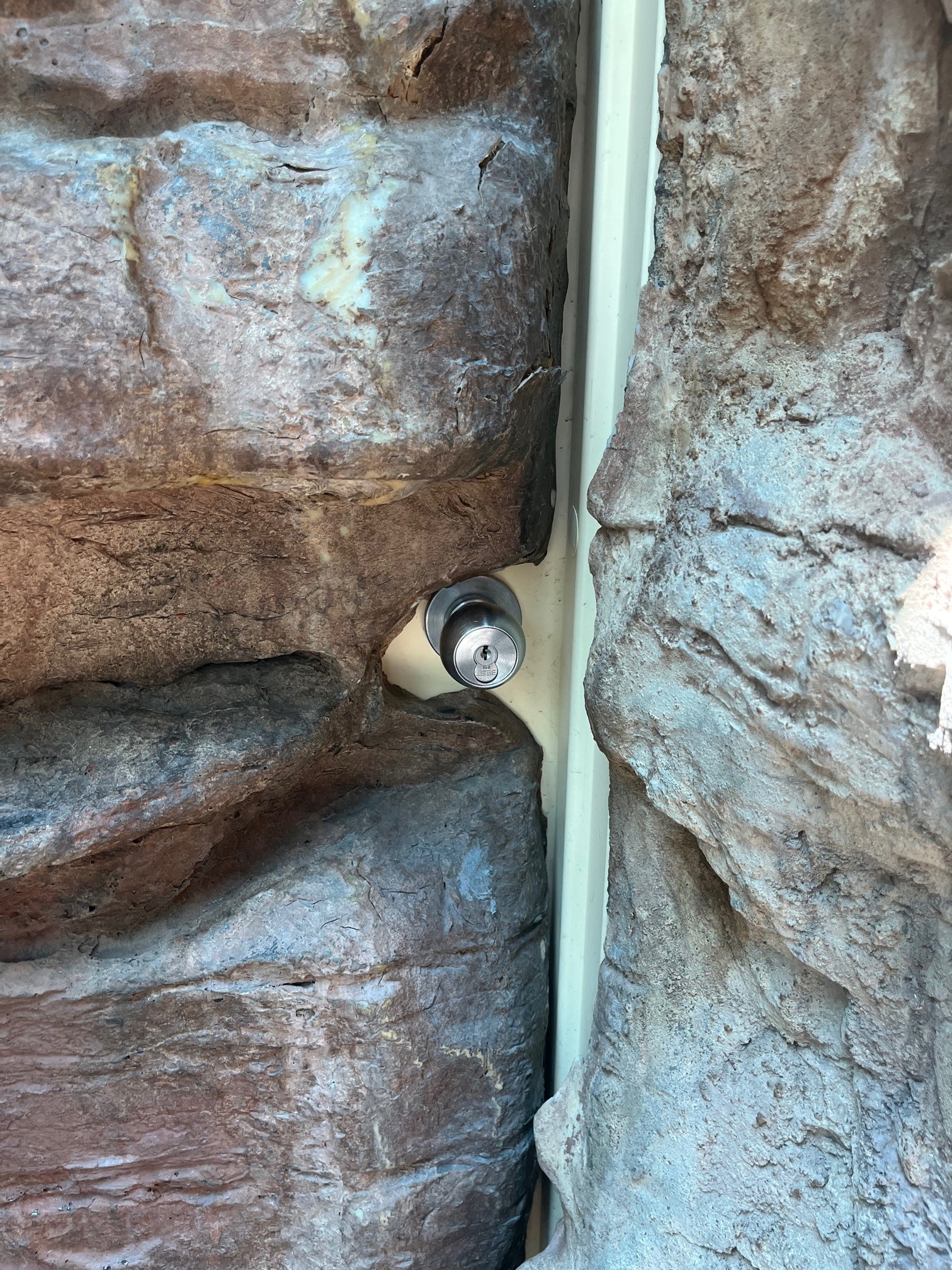
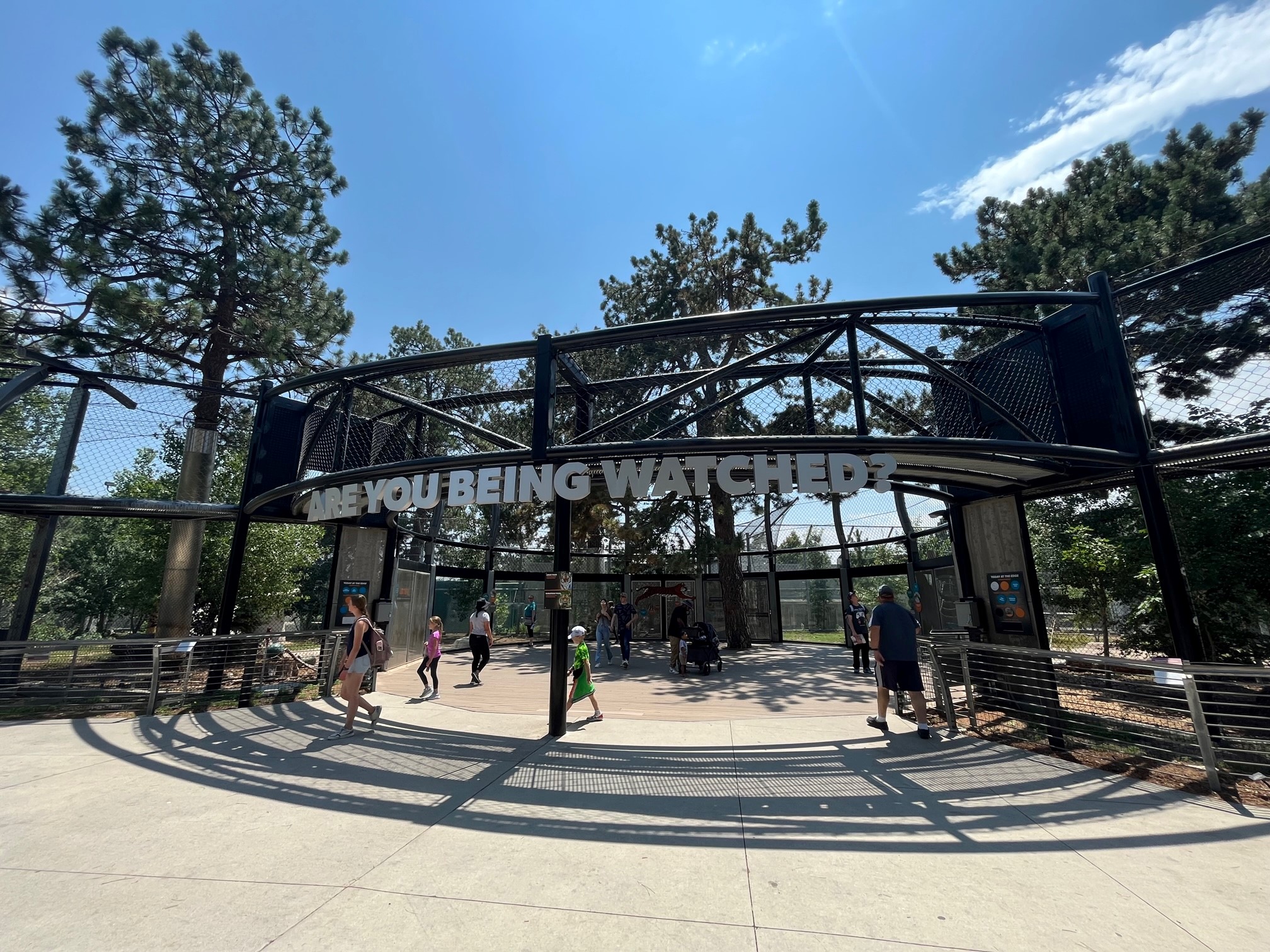
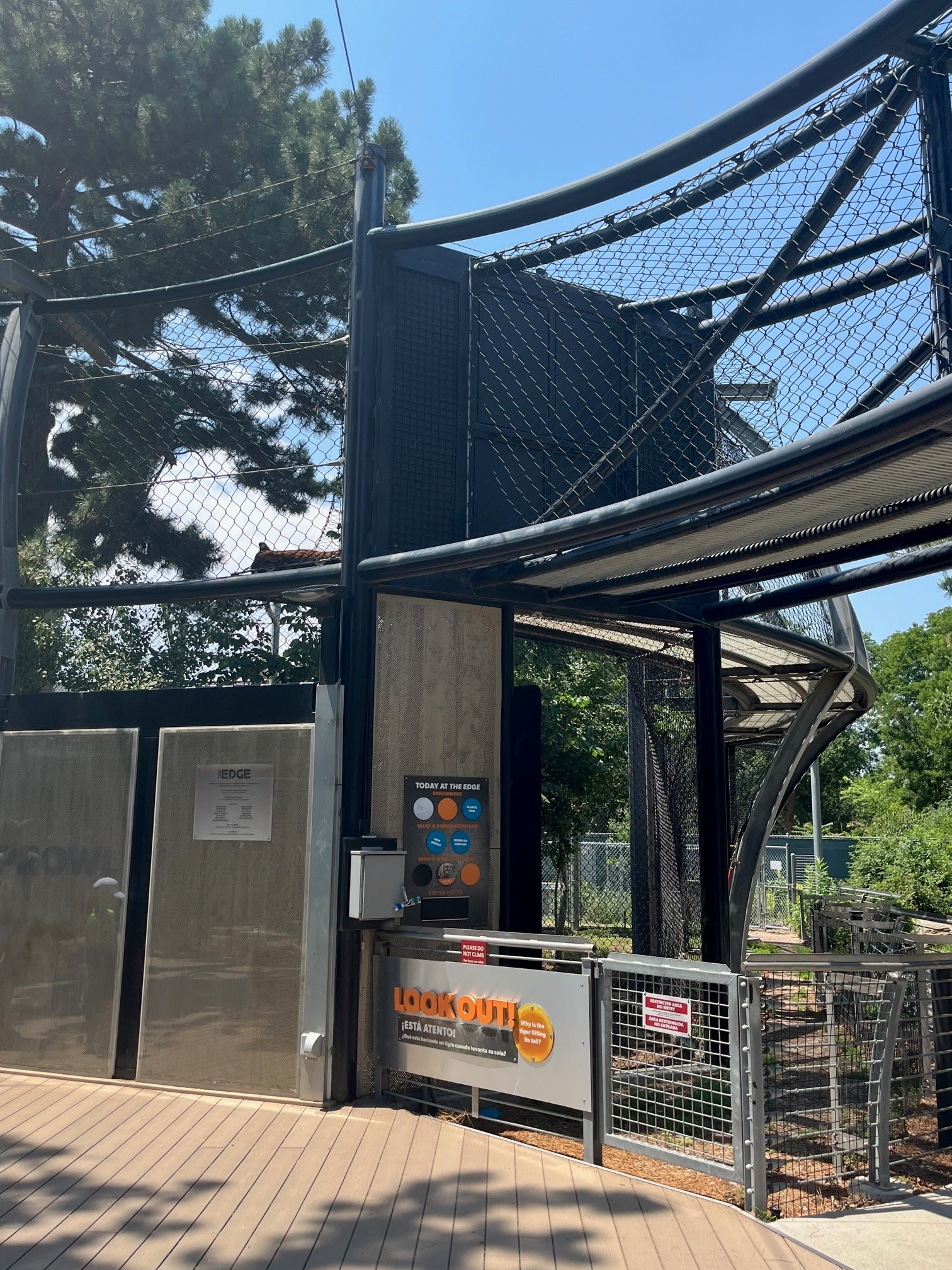
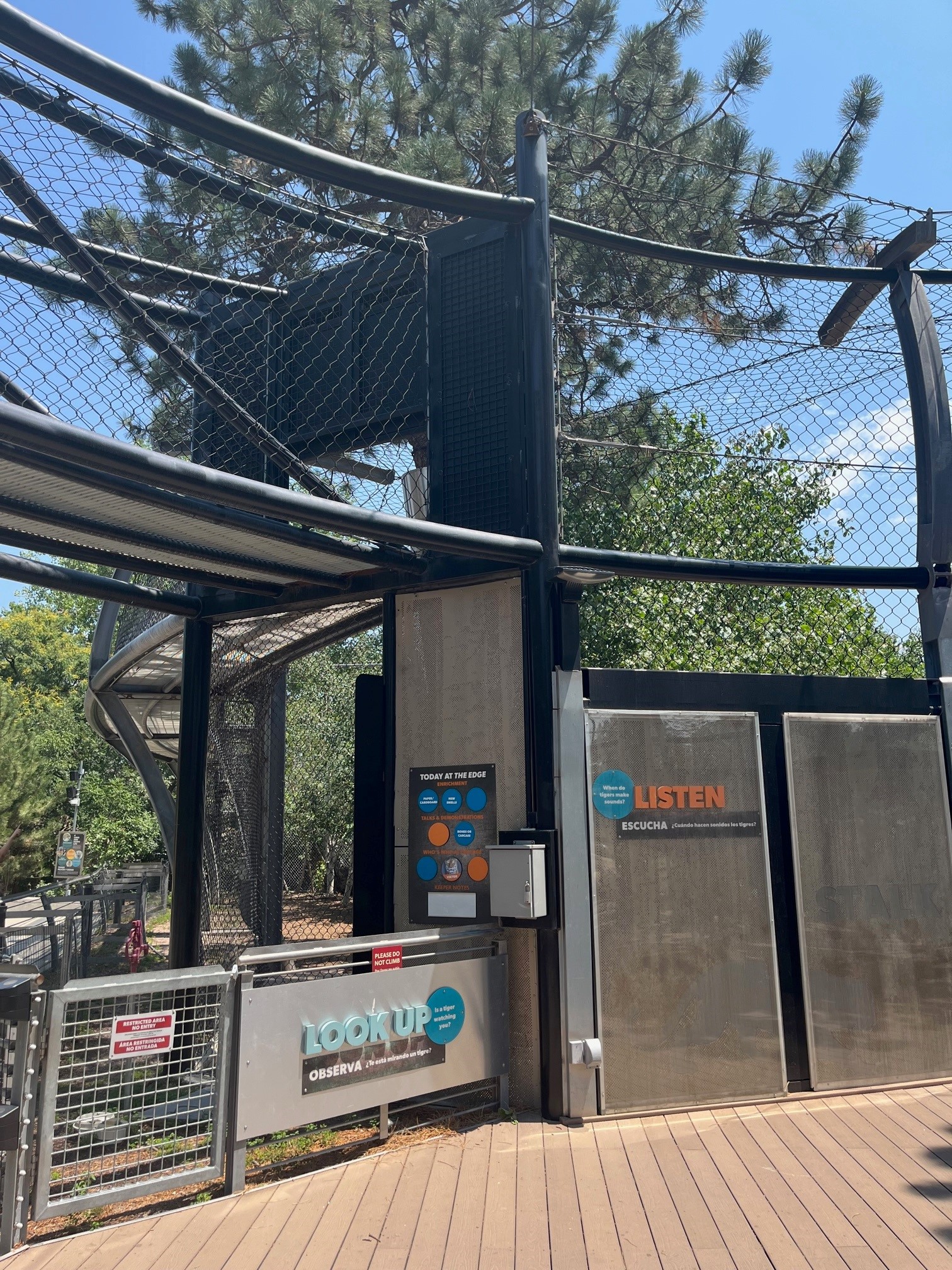
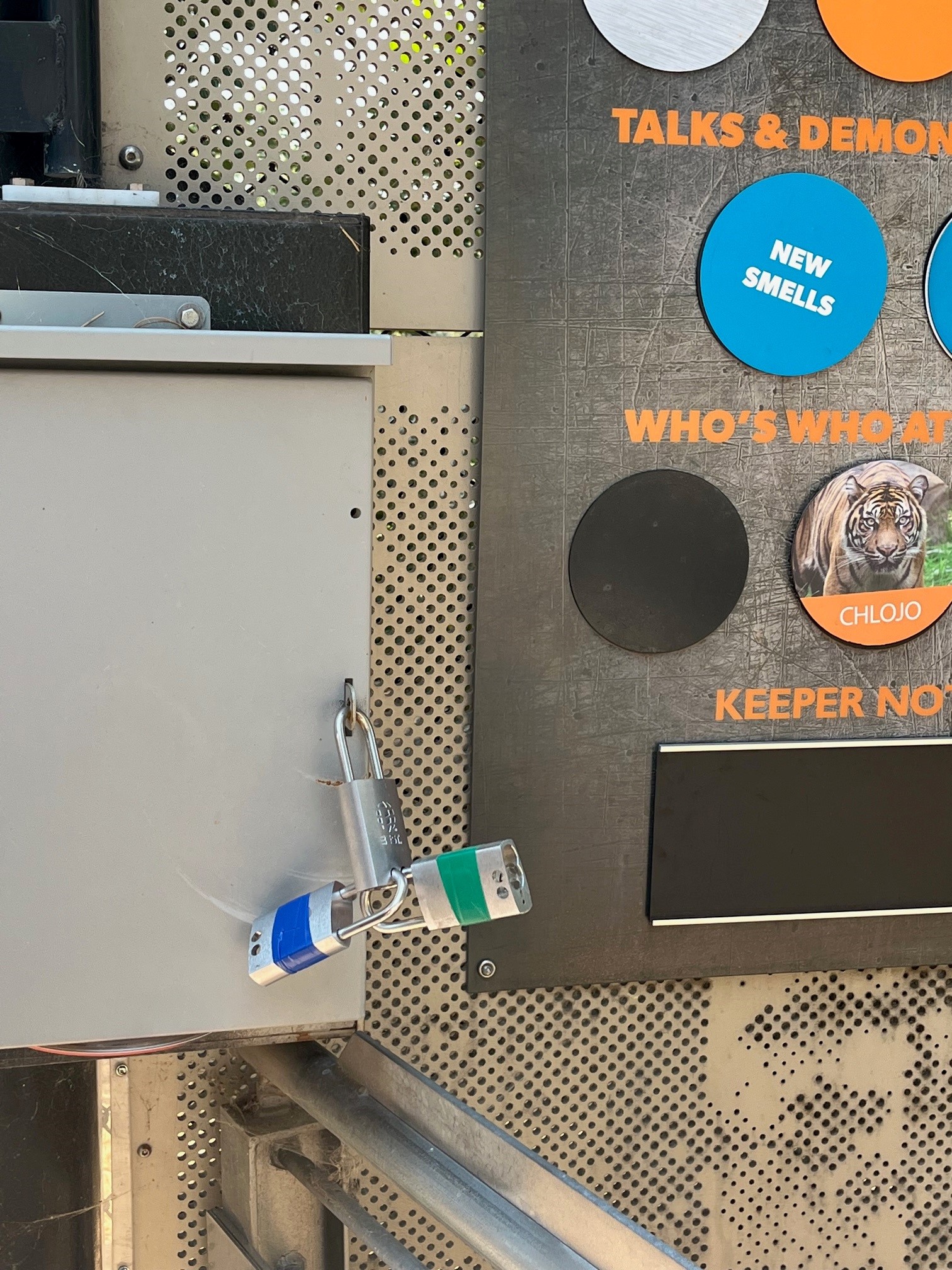
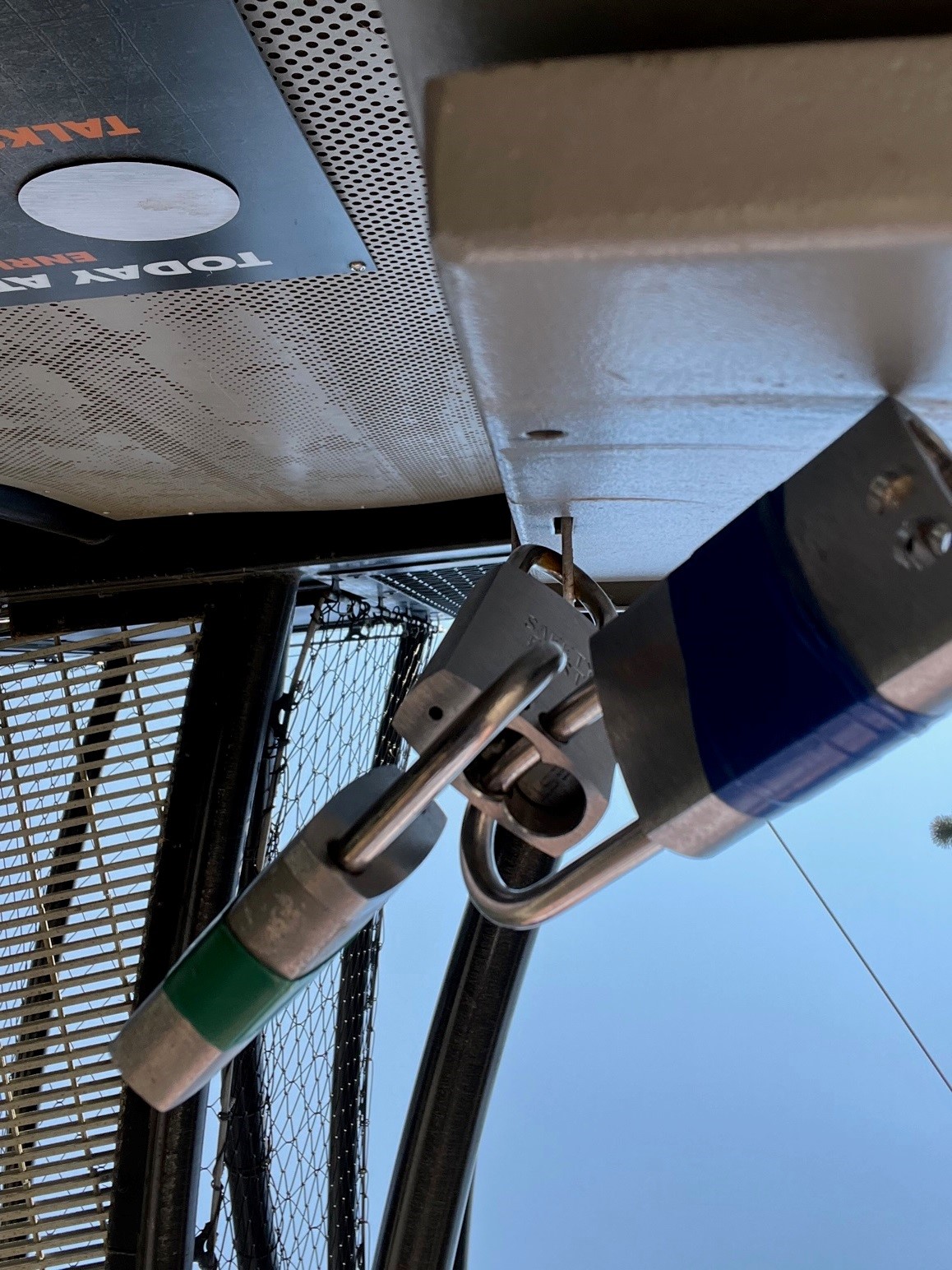
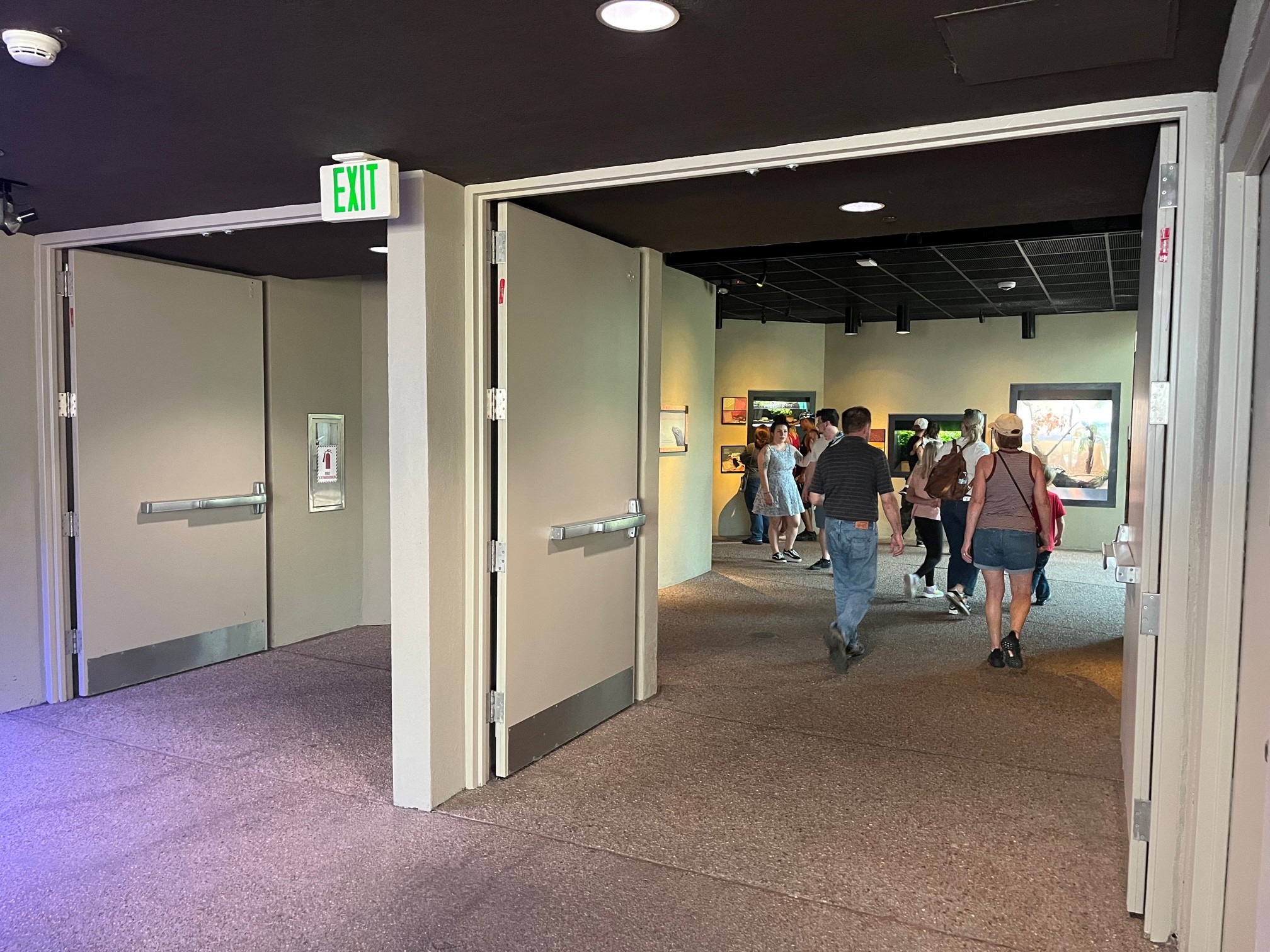
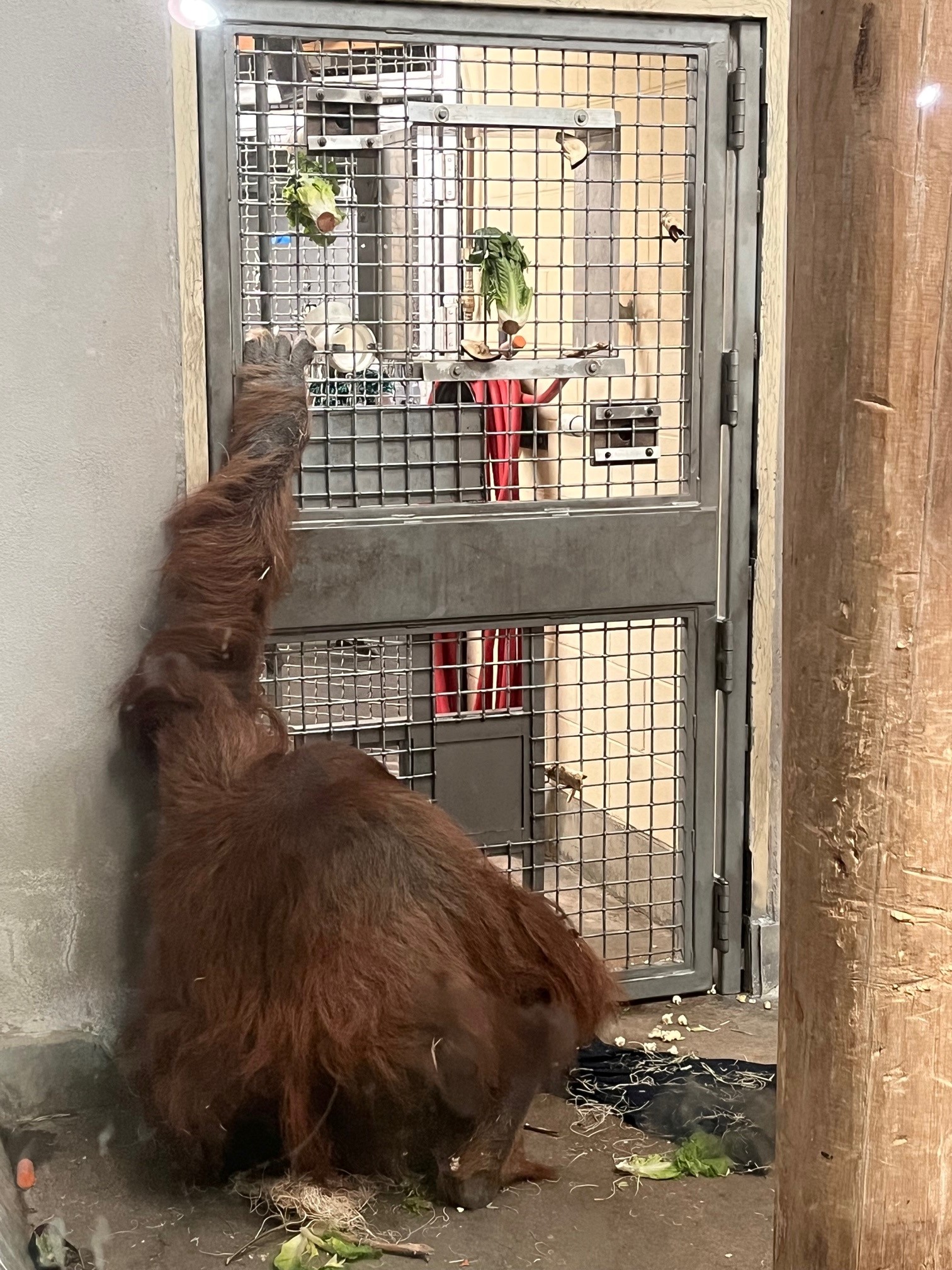
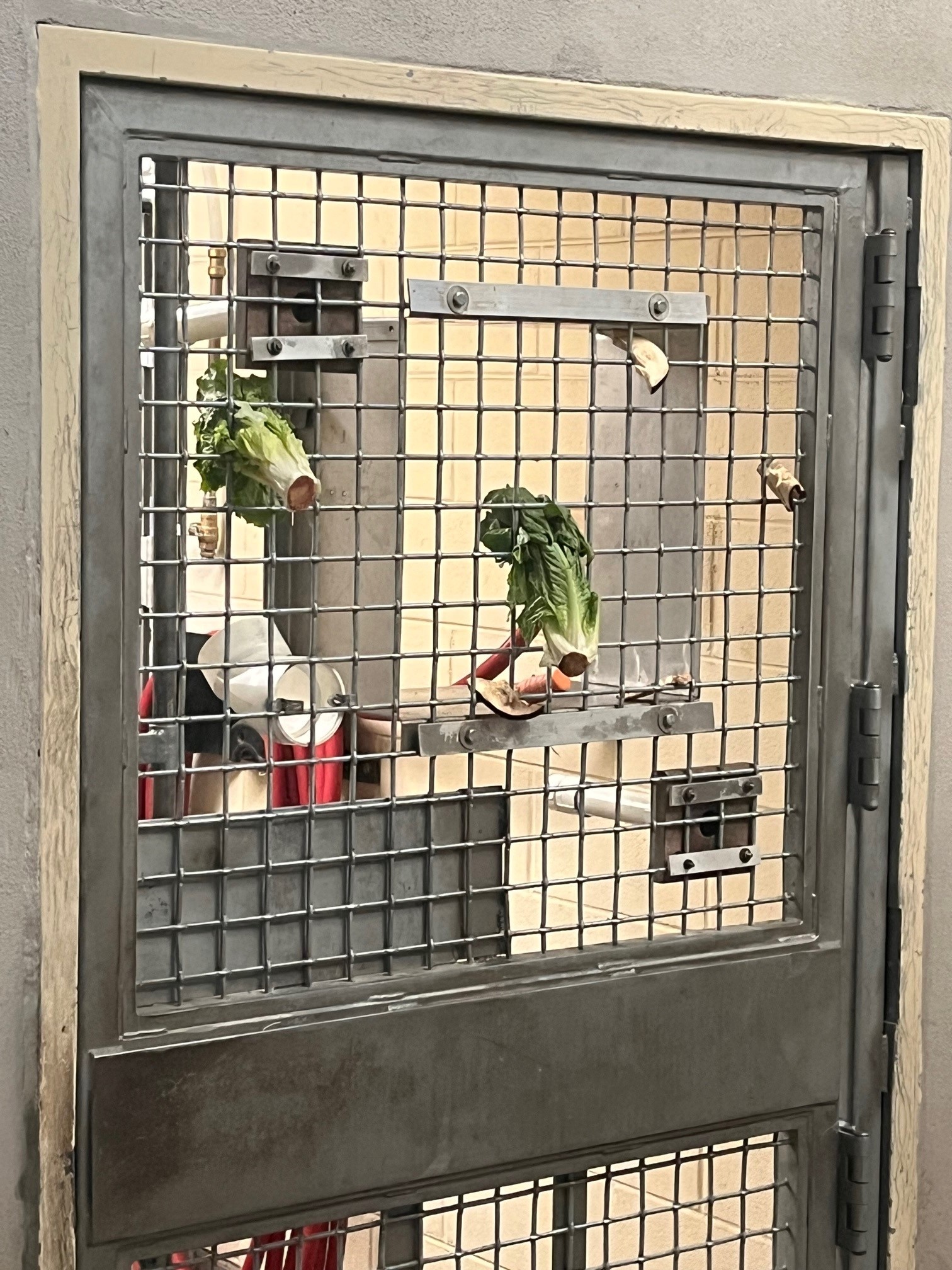
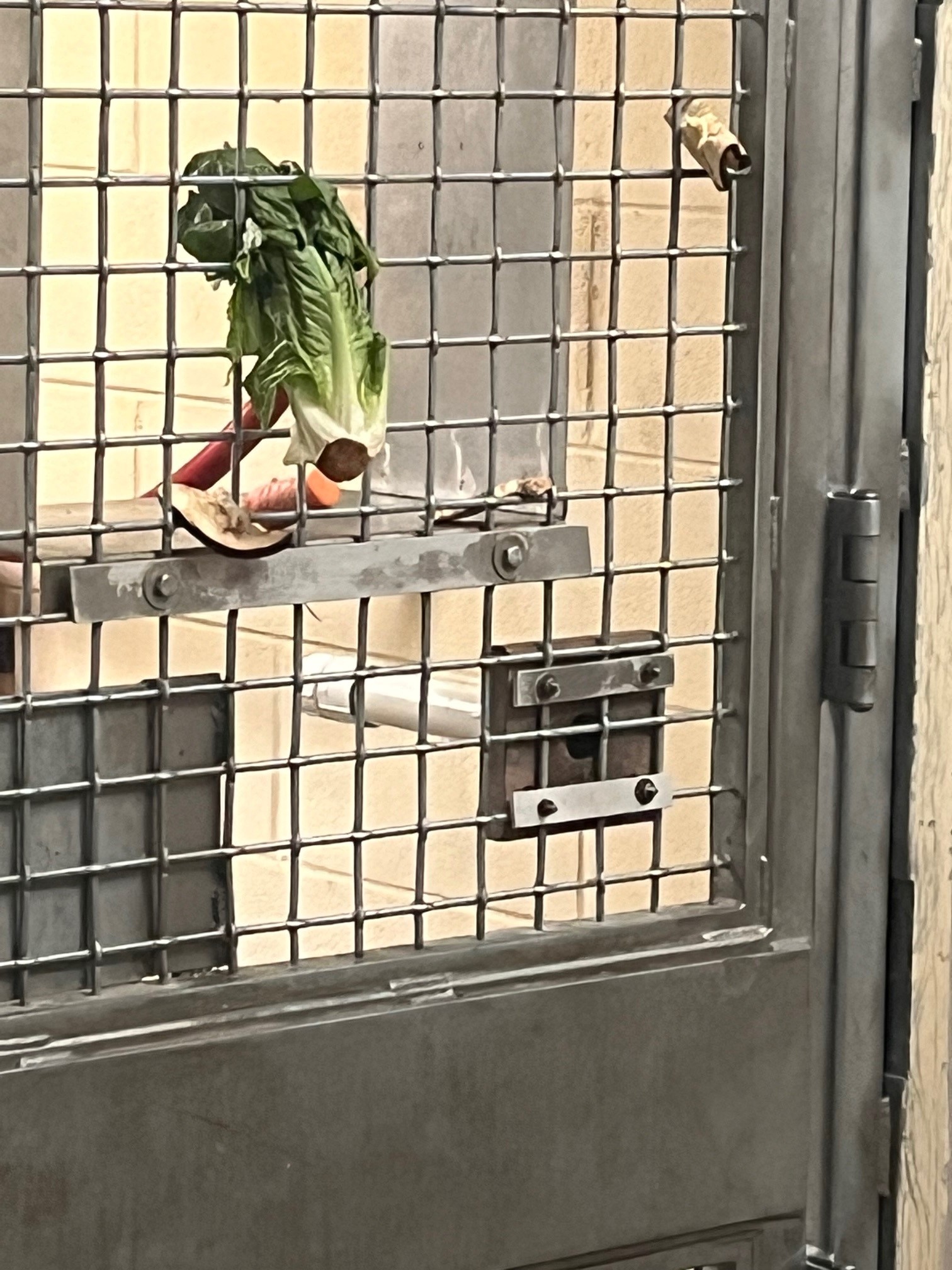
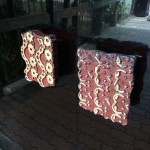
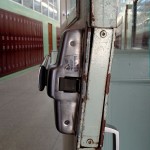



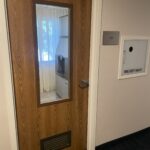
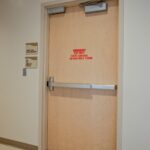

Orangutan enclosure – them fellas have very long fingers and big teeth. I’ll bet the pipes on the grill are for the staff to be able to handle the door without losing fingers, hands, or even arms to one of our fellow primates within.
Good catch on the exit devices being way short for the door widths. Is a push pad even available for doors that wide?
I would also say that 2 pairs of butt hinges on a door leafs that wide would be pushing it, much better see concealed continuous hinges on doors that wide.
Your poor son has heard nothing but door and hardware talk his entire life, from a Mom whom “Digs-Hardware”
Would you expect anything different?????
Hi Bob –
Von Duprin’s max touchpad length at the moment is 24 inches, but they could have used crossbar devices.
All of my kids have had A LOT of exposure to doors…we’ll see how it pans out!
– Lori
Hi Lori,
We work for a couple of zoo properties in our area. Much of the hardware is fairly straight forward.
The key management systems, the MK systems, and lock-out tag-out are of extreme importance. We always say, if we do NOT do our job well, people can die. This in never more true than in a zoo. Access control into “red lock” areas where the risks are very real. Having hardware that will work & survive “scent marking” by big cats, etc.
The most interesting door hardware is in the veterinary hospital areas. Rhinos & elephants will just peel off any surface hardware. Cable style CVR hardware that use racket ball court type lay flat handles, instead of touch bars solve this problem.
Next time you are in our area…
YES! I will come see you! This time it was a quick personal trip, although I was waiting for someone to see me taking photos of doors and ask if I was Lori Greene. LOL 🙂
– Lori
Chain at the giraffe’s upper door is probably a safety chain to prevent zoo personnel from falling to the ground.